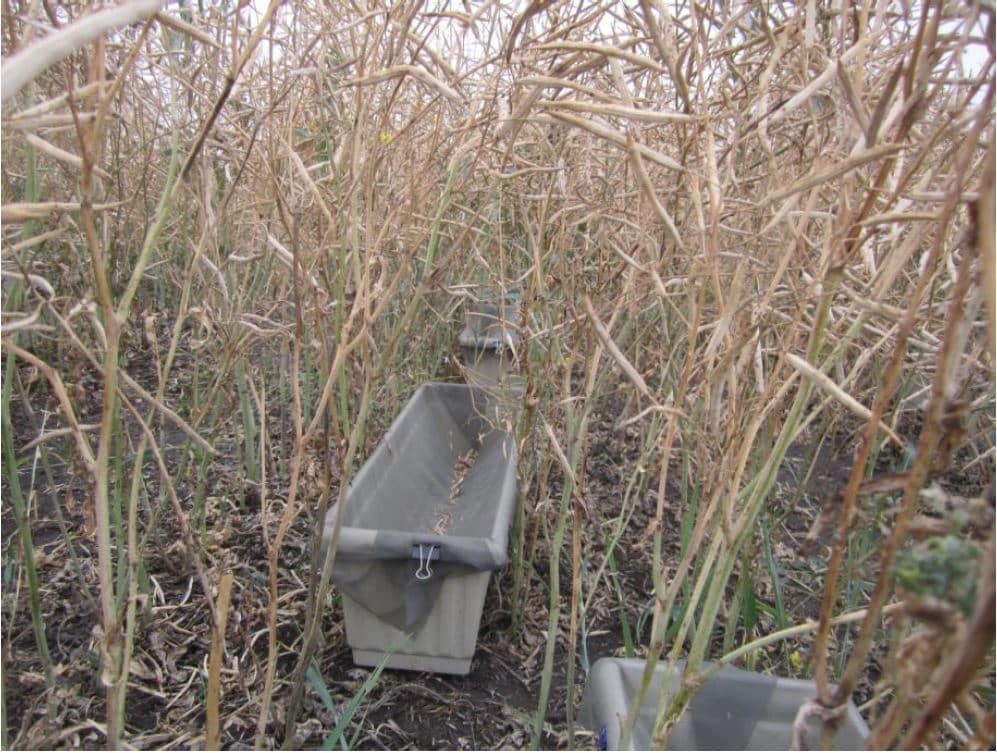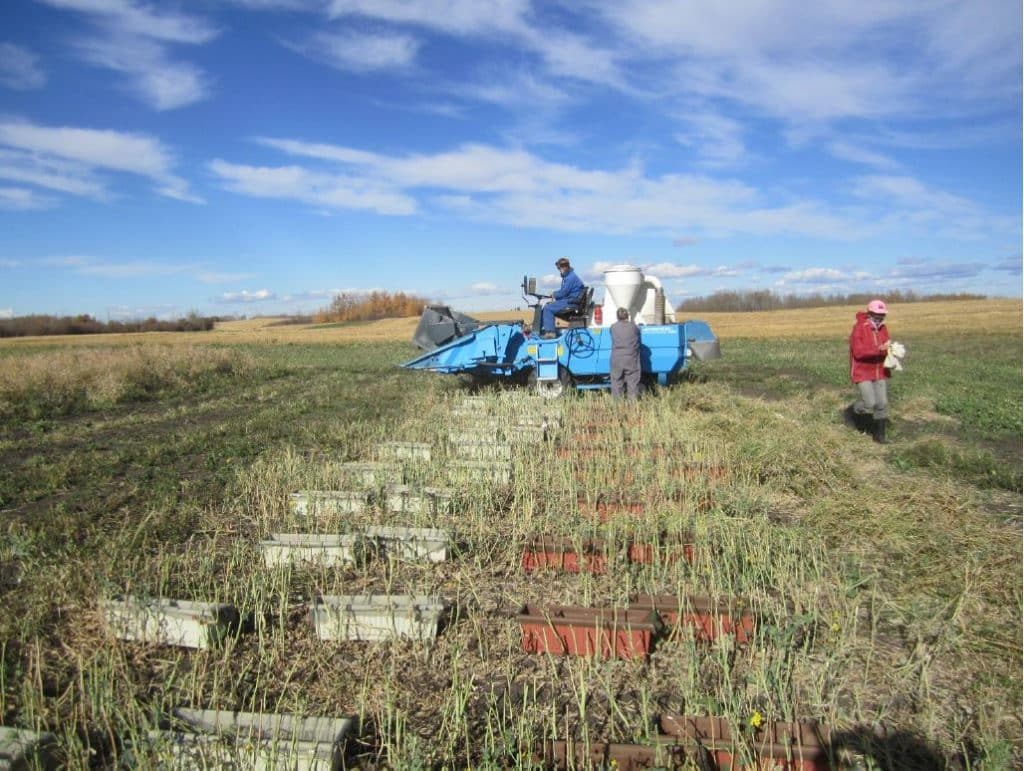Key Result
This project identified B. napus genes that can be used to develop non-GMO canola with reduced pod shattering.
Project Summary
Introduction
Research demonstrates that to develop canola lines with reduced pod shattering, there is a need to reduce the strength of the used promoter and/or use a silique-specific promoter (that does not express in other tissues, especially anthers). Using a weaker promoter from a forest vine Macfadiana ungis-catii (Macfadiana) that was isolated by the researcher in a previous project, this project aims to develop canola lines (B. napus) with reduced pod shattering by using three strategies.
Objectives
- Develop canola (B. napus) lines with reduced pod shattering as follows:
- Isolate/collect cDNAs (genes) for transcription factors (NST1, IND1 and FUL) from Arabidopsis.
- Prepare gene constructs with these cDNAs driven by a promoter from Macfadiana (a forest vine, old name is Doxantha, Macfadiana ungis-catii), and silique-specific promoter.
- Introduce these gene constructs into canola genome through Agrobacterium mediated transformation.
- Molecular analysis of transformed plants for transgene integration and expression.
- Analyze the transgenic canola plants for reduced pod shattering, and assess for petiole strength.
- Isolate cDNAs specific for pod shattering resistance from B. juncea, and use these gene/s to reduce pod shattering in B. napus.
- Field test the promising canola lines to confirm their reduced pod shattering in the field environment.
- Increase yield of canola through reduced pod shattering.

Summary
Pod shattering genes (from Arabidopsis and Brassica juncea) and silique-preferred promoters were isolated, gene constructs made and canola transformation with seven constructs completed. First generation transformed canola plants were assessed for pod shattering resistance and those lines which showed reduced pod shattering and produced normal pods were grown to successive generations to confirm their shattering resistance, to develop homozygous lines and to increase seeds for field trial. Lines producing normal pods and reduced shattering (50-80% less than DH control) were tested in a field trial with CFIA authorization. Despite many challenges faced during the field trial, several lines showed reduced pod shattering in the field (30% less than DH control). These lines can be made available to canola breeders for further use in their breeding program. Through this project, we have identified homologous genes in B. napus which can be mutated to develop non-GMO canola with reduced pod shattering.
Key outcomes:
- Developed canola lines with reduced pod shattering.
- Produced several pod shattering gene constructs (for use in other crops).
- Successfully completed CFIA-regulated field trial.
- Acquired new knowledge for targeted mutation to develop non-GMO canola with reduced pod shattering.

Recommendations
- Knowledge gained from this project resulted in identification of three B. napus homologues as potential targets for site specific mutation. Canola TILLING populations can be screened and target mutant lines can be used for breeding non-GMO canola cultivars with reduced pod shattering.
- Transformed canola lines generated with B. juncea cDNAs should be further studied to confirm novel B. juncea gene/s responsible for pod shattering resistance in this species.
- Lines with reduced pod shattering developed in this project can be made available to canola breeders; and the results of this project can be published so that breeders can use these germplasm and knowledge to develop pod shattering resistant canola lines.





